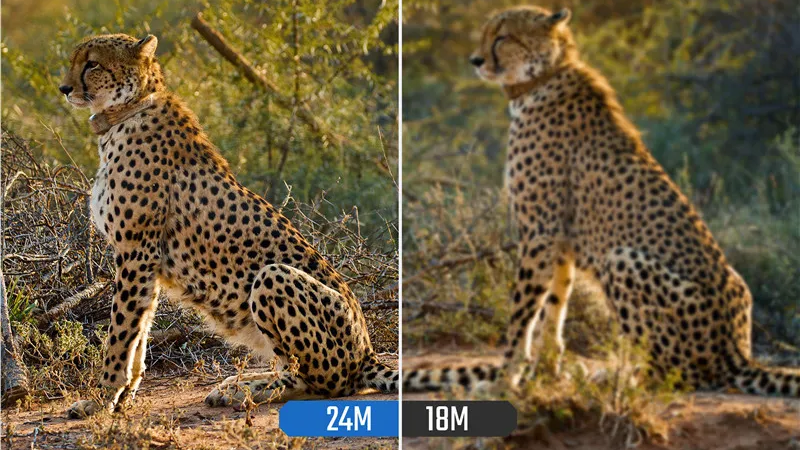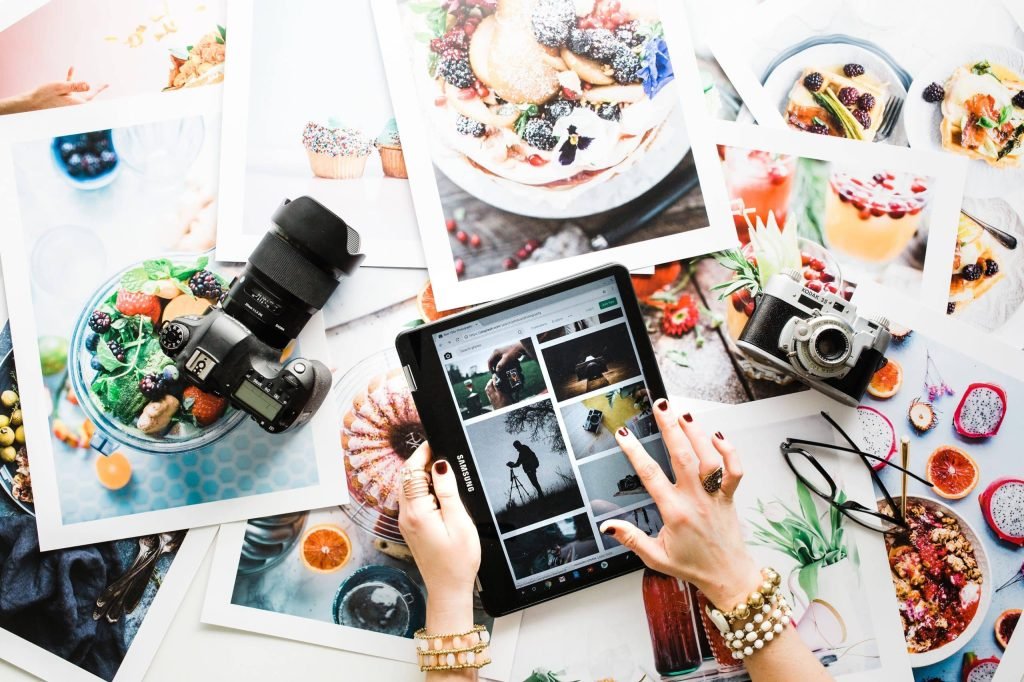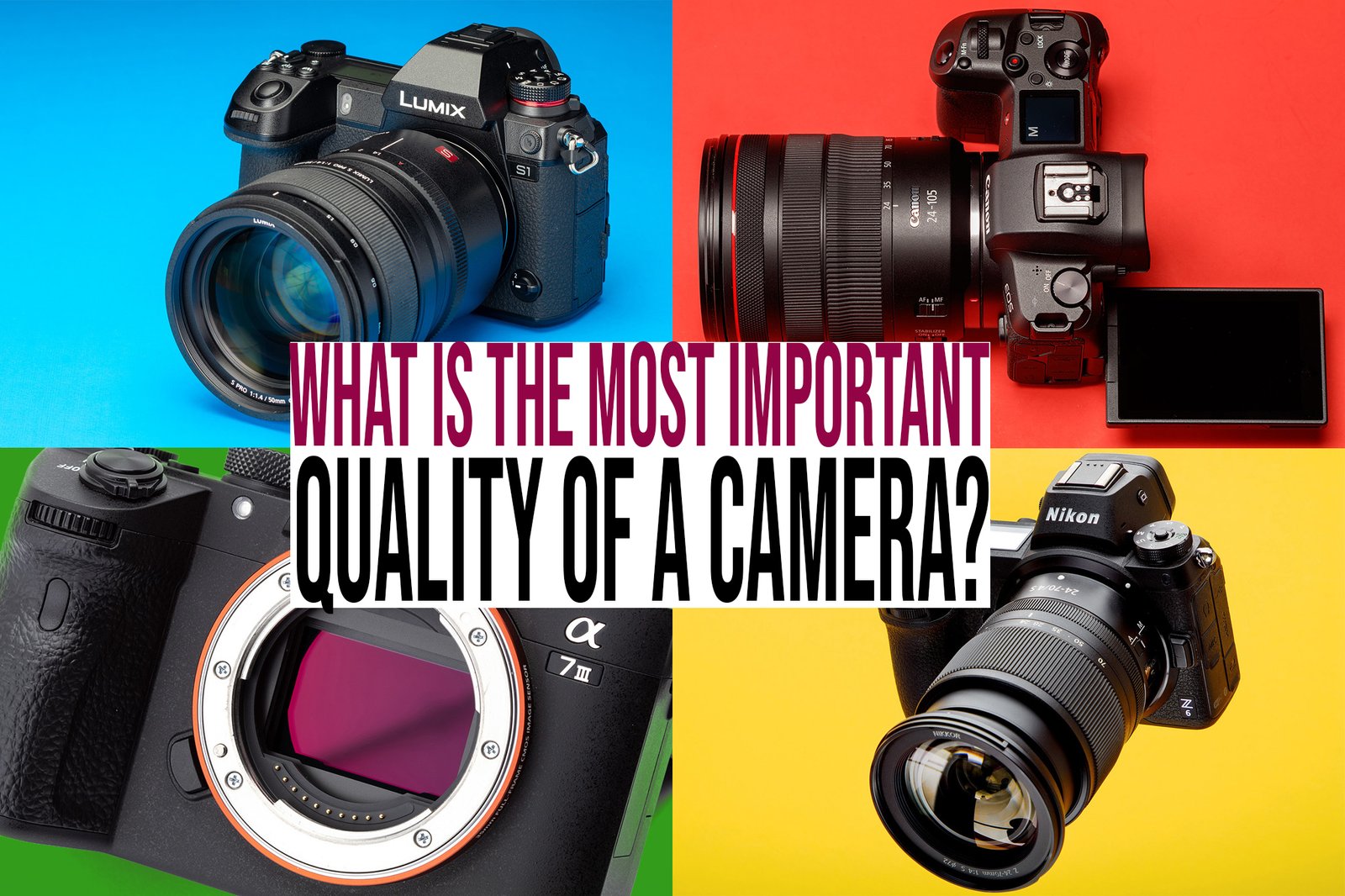How to Choose a Perfect Camera: The Ultimate Guide
The quality of a camera is crucial in the field of photography. It encompasses a wide range of technological subtleties and performance capabilities, going beyond simple specs and features. Let’s examine the characteristics that make up a camera’s most crucial attribute.
Technical Details
A. Sensor Size
1. Effect on Image Quality
The total quality of an image is mostly dependent on the dimensions of the image sensor of a camera. Greater dynamic range, low-light performance, and signal-to-noise ratio are usually the outcomes of larger sensors.
2. Low-Light Operation
A camera’s sensor size is a crucial factor that directly affects how well it performs in low light. Photographers can choose the best camera for their requirements by having a thorough understanding of the intricacies of low-light photography.
B. Megapixels

1. Equality between File Size and Resolution
Although it’s easy to think that a higher megapixel count equals higher quality images, there’s a fine balance to be struck. Larger file sizes that result from higher resolution affect storage and post-processing needs.
2. The Fallacy of Increasing Megapixels
The extra megapixels could not result in a noticeable improvement in image quality after a certain point. The final result is also greatly influenced by other aspects, like as lens quality and sensor size.
C. Lens Quality
1. Coatings and Glass
The lens serves as the camera’s eye, and the sharpness, contrast, and color reproduction of an image are greatly influenced by the glass and coatings used in it.
2. The Meaning of Aperture
The amount of light that enters the lens is determined by the aperture setting. In addition to improving performance in low light, a larger aperture helps provide a beautiful bokeh effect.
D. Image Processing
1. Part in the Finished Image
The camera’s internal image processing is comparable to the digital age’s darkroom. Photographers can make more educated decisions if they are aware of how in-camera processing affects the final image.
2. The Value of Image Processing
The aesthetic aspects of taken photographs are shaped by the camera’s ability to process images in real time, which influences factors like color rendition, sharpness, and noise reduction.
Performance Features
A. Autofocus System
1. Accuracy and Speed
Particularly in situations where shooting is dynamic, a focusing system that is accurate and responsive is essential. A camera’s usefulness in different scenarios is greatly influenced by how quickly it can focus.
2. Monitoring Capabilities
The camera’s tracking and focus stability is critical while working with moving subjects. This function is very important for wildlife and sports photography.
B. ISO Range
1. Effect on Photography in Low Light
The sensitivity of a camera to light is set by its ISO range. Photographers may capture details in difficult circumstances because a greater ISO range improves performance in low light.
2. Equalizing Loudness Levels
A higher ISO makes photographing in low light easier, but it also adds noise to the picture. Achieving the best results requires knowing how different cameras handle noise at higher ISO settings.
C. Burst Rate
1. Action Photography Importance
To record fast-moving action, the burst rate, or frames per second (fps), is essential. A rapid burst rate helps photographers, especially those shooting sports and animals, to capture the ideal shot.
2. Selecting the Appropriate Burst Rate
It is crucial to strike a balance between factors like processor power and storage capacity and the requirement for a high burst rate. Selecting the appropriate burst rate corresponds with the needs of the photographer.
Ergonomics and Handling
A. Construction Quality
1. Sturdiness and Age
Purchasing a camera with a strong construction guarantees lifespan and durability. Weather sealing is a common feature of cameras made for harsh situations to keep out moisture and dust.
2. Weatherproofing
Weather-sealed cameras prove to be quite advantageous for photographers operating in a variety of environments, including deserts and rainforests. This feature maintains functionality and protects internal components.
B. Dimensions and Mass
1. Features versus portability
When choosing a camera, it’s important to weigh features against portability. Although small cameras are easy to carry about, larger models could have more sophisticated features.
2. Balancing for Various Objectives
Photographers who specialize in certain genres, including travel or street photography, may choose tiny and lightweight versions. On the other hand, studio photographers could give preference to larger bodies with better features.
C. Interface with Users
1. Sensual Mechanisms
The entire user experience of a camera is greatly influenced by its user interface. Easy-to-use controls make shooting photos smooth and free up photographers to express themselves creatively.
2. Possibilities for Customization
The capacity to alter settings adds to a photographer’s productivity and makes the shooting process more unique. Broadly customizable cameras accommodate a wide range of tastes.
Connectivity and Compatibility
A. Features of Wireless
1. The value of Bluetooth and Wi-Fi
Wi-Fi and Bluetooth-enabled cameras allow for the easy uploading of photographs to other devices in the age of immediate sharing. This tool helps photographers who are always on the go work more efficiently.
2. Capabilities for Remote Control
Wireless communication is not limited to the transfer of images. Remote-controlled cameras open up new creative opportunities for photographers, enabling them to try out unusual angles and compositions.
B. Lens Interoperability
1. Lenses that can interchange
A camera’s adaptability is increased when it has many lens compatibility. With interchangeable lens systems, photographers may experiment with different focal lengths and adjust to a variety of shooting situations.
2. Support for Third-Party lenses
Compatibility with third-party lenses extends the photographer’s options beyond those of the manufacturer. Evaluating third-party lens availability and quality is essential to assembling a complete gear set.
Relevance in Different Types of Photography

A. Portrait Photography
1. Bokeh and Depth of Field
For portrait photographers, achieving a pleasing bokeh effect and managing depth of field are paramount. The combination of lens aperture and sensor size contributes to these aesthetic qualities.
2. Skin Tone Reproduction
Accurate reproduction of skin tones is crucial in portrait photography. Cameras with sophisticated color science excel in capturing the nuances of human skin, adding a level of realism to portraits.
B. Landscape Photography
1. Dynamic Range
Landscape photographers often contend with high-contrast scenes. A camera’s dynamic range, influenced by sensor capabilities, is crucial for retaining detail in both shadows and highlights.
2. Sharpness and Clarity
The pursuit of sharp and clear landscapes demands a combination of high-resolution sensors and quality lenses. Understanding the synergy between these elements is vital for landscape photographers.
C. Action Photography
1. High-Speed Performance
Action photographers require cameras with high-speed performance to freeze fast-paced moments. A combination of fast autofocus, high burst rates, and responsive controls caters to the demands of action photography.
2. Autofocus Tracking
Tracking moving subjects demands a robust autofocus tracking system. Cameras designed for action photography excel in maintaining focus on subjects in motion, ensuring sharp and well-composed shots.
Future-Proofing
A. Upgradability
1. Firmware Updates
Manufacturers often release firmware updates to enhance a camera’s performance and add new features. Choosing a camera with a history of consistent updates ensures long-term usability.
2. Compatibility with Emerging Technologies
As technology evolves, cameras with forward-looking features and compatibility with emerging technologies stand the test of time. Assessing a camera’s adaptability to future advancements is a strategic consideration.
Price vs. Value
A. Understanding the Investment
1. Entry-Level vs. Professional Cameras
The photography market offers a spectrum of cameras catering to different skill levels. Understanding the distinction between entry-level and professional models guides photographers in making informed investment decisions.
2. Long-Term Value Considerations
While budget constraints are a reality, considering the long-term value of a camera is essential. Investing in a camera that aligns with future aspirations and growth ensures a more satisfying and enduring photographic journey.
The Art of Composition
A. Rule of Thirds
1. Creating Visual Interest
Understanding and applying the rule of thirds adds a layer of sophistication to compositions. Cameras that provide grid overlays assist photographers in framing subjects more artistically.
2. Dynamic Symmetry
Beyond the rule of thirds, dynamic symmetry techniques elevate composition. Cameras with advanced viewfinders or live view displays aid photographers in implementing these principles effectively.
B. Color Science
1. Reproducing Accurate Colors
Color science varies between camera models, impacting the way colors are captured and rendered. Cameras with superior color science enhance the authenticity of the visual narrative.
2. Custom Color Profiles
Photographers seeking a distinct look often appreciate cameras that offer customizable color profiles. This feature allows for the creation of a signature style.
Innovation in Image Stabilization
A. In-Body Stabilization
1. Advantages for All Lenses
Cameras equipped with in-body stabilization provide a significant advantage, especially for photographers using lenses without built-in stabilization. This feature enhances the potential for handheld shooting in various conditions.
2. Hybrid Systems
Combining in-body stabilization with lens-based stabilization results in hybrid systems. Understanding how these systems complement each other aids photographers in maximizing the effectiveness of stabilization.
B. Electronic Viewfinders (EVFs)
1. Real-Time Exposure Preview
The advent of electronic viewfinders revolutionized the way photographers compose shots. Real-time exposure previews contribute to more accurate exposure settings, especially in challenging lighting scenarios.
2. Information Overlay
EVFs often allow for customizable information overlays, providing photographers with relevant data without diverting their attention from the scene. This enhances the overall shooting experience.
Navigating Camera Menus Effectively
A. Streamlined Menu Architecture
1. Logical Organization
Cameras with logically organized menus simplify the navigation process. This is particularly beneficial for photographers who switch between different settings frequently.
2. Customizable Shortcuts
The ability to customize shortcuts and assign specific functions to buttons streamlines the workflow. Cameras offering extensive customization ensure a more efficient shooting experience.
B. Touchscreen Functionality
1. Intuitive Controls
Touchscreen functionality adds an extra layer of intuitive control. Navigating menus, reviewing images, and adjusting settings become more accessible with responsive touchscreens.
2. Touch-to-Focus
For precise focusing, touch-to-focus functionality on the screen allows photographers to select the exact point of focus quickly. This is especially useful in situations where accuracy is paramount.
The Role of Artificial Intelligence (AI)
A. Scene Recognition
1. Automatic Settings Optimization
Cameras with AI-driven scene recognition can automatically optimize settings based on the detected scene. This feature simplifies the shooting process for beginners and enhances efficiency for experienced photographers.
2. Learning Algorithms
As AI technology evolves, cameras with learning algorithms adapt to a photographer’s shooting style over time. This personalized approach contributes to a more tailored and user-centric experience.
B. Autofocus Enhancements
1. Eye-Tracking Technology
Advanced autofocus systems with eye-tracking technology revolutionize portrait photography. Cameras that excel in locking onto the subject’s eyes ensure consistently sharp and engaging portraits.
2. Predictive Autofocus
In action photography, predictive autofocus capabilities are indispensable. Cameras that can anticipate the movement of subjects and adjust focus accordingly empower photographers to capture decisive moments.
Environmental Considerations
A. Sustainable Materials
1. Eco-Friendly Manufacturing
An increasing awareness of environmental impact prompts some camera manufacturers to prioritize sustainable materials and eco-friendly manufacturing processes.
2. Energy Efficiency
Cameras designed with energy-efficient components contribute to a reduced carbon footprint. Battery technology advancements also play a role in extending the lifespan of each charge.
B. Recycling Programs
1. End-of-Life Considerations
Companies offering comprehensive recycling programs for cameras address the concerns of environmentally conscious photographers. Responsible disposal and recycling contribute to a more sustainable industry.
Community and Support
A. Online Communities
1. Knowledge Sharing
Cameras that foster online communities provide photographers with valuable platforms for knowledge sharing. Access to tips, tutorials, and user experiences enhances the learning curve for enthusiasts.
2. Firmware Support Forums
Active firmware support forums indicate a manufacturer’s commitment to ongoing product improvement. Cameras with engaged user communities often receive valuable feedback that contributes to future updates.
B. Customer Service
1. Responsiveness
Prompt and responsive customer service is vital for addressing queries and concerns. Cameras from manufacturers with a reputation for excellent customer support instill confidence in buyers.
2. Warranty Coverage
Transparent and comprehensive warranty coverage adds value to a camera purchase. Understanding the terms and duration of warranty support is essential for long-term satisfaction.
Cultural and Artistic Impact
A. Documenting History
1. Social and Cultural Significance
Cameras often become tools for documenting historical events, social movements, and cultural shifts. Recognizing a camera’s potential to influence narratives adds depth to its importance.
2. Artistic Expression
Beyond documentation, cameras serve as mediums for artistic expression. Features that enable creative experimentation contribute to a camera’s cultural and artistic impact.
The Future of Camera Technology
A. Advancements in Sensor Technology
1. Beyond Megapixels
The future of camera sensors goes beyond the race for more megapixels. Advancements focus on improving dynamic range, sensitivity, and pixel-level innovations.
2. Quantum Imaging
Emerging quantum imaging technologies hold the promise of revolutionary changes in how cameras capture and process light. The potential for unprecedented image quality opens new frontiers in photography.
B. Integration with Augmented Reality (AR)
1. Enhanced Visualization
Cameras integrating with augmented reality offer photographers enhanced visualization tools. AR overlays can assist in framing shots and provide real-time information, enriching the shooting experience.
2. AI-Driven Augmented Photography
The synergy between AI and augmented reality is poised to redefine photography. AI-driven enhancements, filters, and creative tools integrated into the camera interface open new possibilities for photographers.
Reflecting on Personal Style
A. Signature Techniques
1. Developing a Unique Style
Photographers often gravitate toward cameras that allow them to develop a signature style. Understanding how a camera facilitates individual expression is crucial for artists seeking a distinctive voice.
2. Compatibility with Creative Vision
A camera that aligns with a photographer’s creative vision becomes an extension of their artistic identity. Recognizing this alignment fosters a deeper connection between the artist and their tool.
Challenges and Innovations in Mobile Photography
A. Rise of Smartphone Cameras
1. Disruption in the Industry
The ubiquity of smartphones challenges traditional camera manufacturers. Adapting to the evolving landscape requires innovative approaches to stay relevant.
2. Integration with Professional Workflows
Some photographers embrace smartphones as complementary tools. Cameras that seamlessly integrate with mobile workflows provide flexibility and convenience.
B. Computational Photography
1. Beyond Traditional Capabilities
Computational photography expands the boundaries of what cameras can achieve. Features like computational bokeh and night mode demonstrate the fusion of software and hardware innovations.
2. Future Potential
The continuous evolution of computational photography hints at a future where cameras become even more adept at capturing and enhancing moments through advanced algorithms.
Unraveling the Subjective Nature of Quality
A. Personal Preferences
1. Tailoring to Individual Tastes
The definition of a quality camera is inherently subjective, often shaped by individual preferences. Acknowledging this subjectivity allows photographers to prioritize features that resonate with their unique vision.
2. Emotional Connection
The emotional connection between a photographer and their camera transcends technical specifications. Understanding the intangible bond fosters a more profound appreciation for the chosen tool.
Conclusion
In the ever-evolving landscape of photography, the most important quality of a camera is a multi-faceted concept. It encompasses technical prowess, innovative features, ergonomic design, and cultural significance. As photographers navigate the myriad choices in the market, a holistic understanding of these qualities empowers them to select a camera that aligns with their artistic vision and aspirations.





Leave a Reply